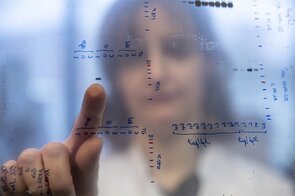
Profile
The positions in the table below reflect the University of New South Wales (UNSW Sydney)'s position overall, domestically, within their sector, and in various subject areas based on their Share. Each position links to the corresponding table where University of New South Wales (UNSW Sydney) is listed.
Position by research output Share
Position by research output Share in subject areas
Research
Overall research output
| Count | Share | |
|---|---|---|
| Overall | 562 | 136.28 |
Overall Count and Share for 'University of New South Wales (UNSW Sydney)' based on the 12-month time frame mentioned above.
Research outputs by subject area
| Subject | Count | Share |
|---|---|---|
| Biological sciences | 146 | 24.81 |
| Chemistry | 145 | 46.41 |
| Earth & environmental sciences | 83 | 24.16 |
| Health sciences | 161 | 21.38 |
| Physical sciences | 158 | 54.30 |
Note: Articles may be assigned to more than one subject area, as a result the sum of the subject research outputs may not equal the overall research outputs.
Note: Hover over the donut graph to view the Share for each subject.
Share output for the past 5 years
Nature Strategy Reports
Identify research insights to guide research strategy and grow your impact with our Nature Strategy reports.
-
Actionable insights into research performance.
-
Detailed analysis of strengths and weaknesses.
-
Covers all major disciplines and regions of the world.

Explore the topics behind the 75,000 papers in the Nature Index 2024 Research Leaders
Collaboration
International vs domestic collaboration by Share
| Type | Percentage |
|---|---|
| International (2416 institutions) | 65.8% |
| Domestic (227 institutions) | 34.2% |
Note: Hover over the graph to view the percentage of collaboration.
Top 5 domestic collaborators with University of New South Wales (UNSW Sydney) by Share
Collaborating institutions
Share
Top 5 international collaborators with University of New South Wales (UNSW Sydney) by Share
Collaborating institutions
Share
Job finder
-
Director, X-ray Facility - Senior Lecturer or Associate Professor (Level C/D)
University of New South Wales (UNSW) Sydney, NSW
View more job listings on Nature Careers.
Latest supplement
Relationships
Affiliated joint institutions and consortia
- ARC Centre for Complex Systems (ACCS)
- ARC Centre for Excellence in Antarctic Science (ACEAS)
- ARC Centre for Nanoscale BioPhotonics (CNBP)
- ARC Centre of Excellence for Australian Biodiversity and Heritage (CABAH)
- ARC Centre of Excellence for Autonomous Systems (CAS)
- ARC Centre of Excellence for Climate Extremes (CLEX)
- ARC Centre of Excellence for Climate System Science
- ARC Centre of Excellence for Creative Industries and Innovation (CCI)
- ARC Centre of Excellence for Design in Light Metals
- ARC Centre of Excellence for Enabling Eco-Efficient Beneficiation of Minerals
- ARC Centre of Excellence for Engineered Quantum Systems (EQuS)
- ARC Centre of Excellence for Functional Nanomaterials
- ARC Centre of Excellence for Green Electrochemical Transformation of Carbon Dioxide (GETCO2)
- ARC Centre of Excellence for Integrative Brain Function (CIBF)
- ARC Centre of Excellence for Kangaroo Genomics (KanGO)
- ARC Centre of Excellence for Mathematical and Statistical Frontiers of Big Data, Big Models, New Insights (ACEMS)
- ARC Centre of Excellence for Mathematics and Statistics of Complex Systems (MASCOS)
- ARC Centre of Excellence for Quantum Computation and Communication Technology (CQC²T)
- ARC Centre of Excellence in Advanced Molecular Imaging
- ARC Centre of Excellence in Cognition and its Disorders (CCD)
- ARC Centre of Excellence in Convergent Bio-Nano Science and Technology
- ARC Centre of Excellence in Exciton Science
- ARC Centre of Excellence in Future Low-Energy Electronics Technologies (FLEET)
- ARC Centre of Excellence in Population Ageing Research (CEPAR)
- ARC Centre of Excellence in Synthetic Biology
- ARC Industrial Transformation and Training Centre in Data Analytics for Resources and the Environment (DARE)
- Australasian Diabetes Data Network (ADDN)
- Australian Defence Force Academy (ADFA)
- Australian National Fabrication Facility (ANFF)
- Bionic Vision Australia (BVA)
- Centre for Eye Health (CFEH)
- Centre for Southern Hemisphere Oceans Research (CSHOR)
- Earth Systems and Climate Change Hub (ESCC)
- George Institute - Australia (TGI Australia)
- Ingham Institute
- Joint Remote Sensing Research Program (JRSRP)
- Kathleen Cuningham Foundation Consortium for Research into Familial Breast Cancer (kConFab)
- Lowy Cancer Research Centre
- National Ageing Research Institute (NARI)
- National Centre for Groundwater Research and Training (NCGRT)
- National Computational Infrastructure (NCI)
- National Environmental Science Programme (NESP)
- National Imaging Facility (NIF)
- Re-Inventing the Nation's Urban Water Infrastructure (ReNUWIt)
- Securing Antarctica’s Environmental Future (SAEF)
- Sino-Australian Research Consortium for Coastal Management
- St Vincent's Centre for Applied Medical Research (AMR)
- Stem Cells Australia
- Sydney Consortium for Particle Physics and Cosmology (Sydney-CPPC)
- Sydney Institute of Marine Science (SIMS)
- UNSW Node of EMBL Australia in Single Molecule Science
- UNSW-CWRU International Joint Laboratory
- Wisconsin Astrobiology Research Consortium (WARC)


